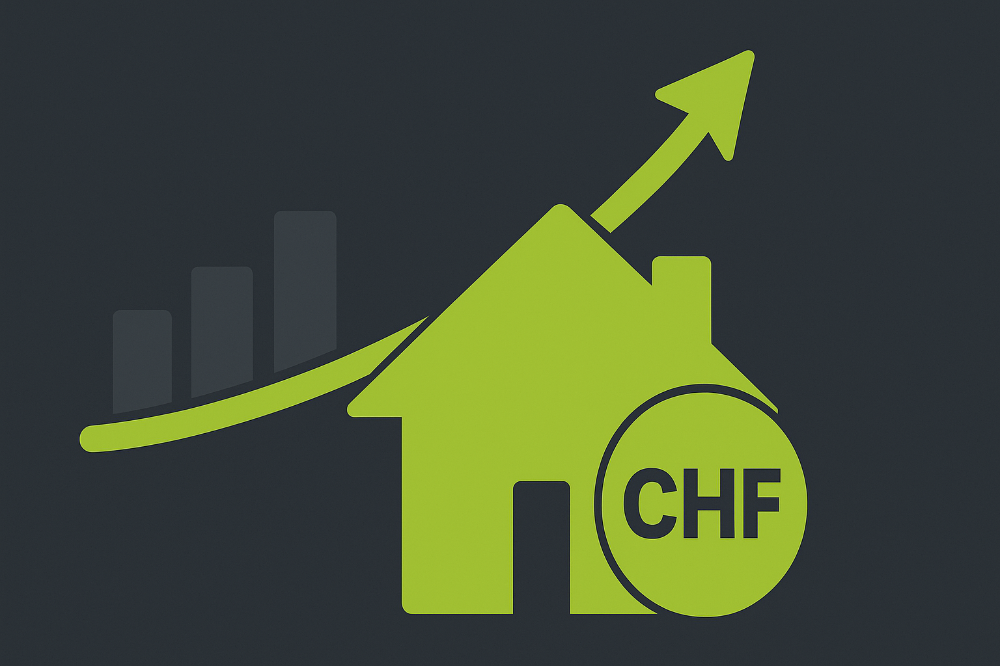 Wohnbauhypotheken als Chance für Pensionskassen
Wohnbauhypotheken als Chance für Pensionskassen
Pension funds are looking for stable, predictable returns – but traditional asset classes are hardly generating any returns anymore. Mortgages offer an interesting alternative here, with attractive interest rates and low volatility. Nevertheless, their share in portfolios remains negligible. Why this is the case and how modern mortgage software is making access easier.
Pension funds are under pressure. Obligations are growing, life expectancy is rising and markets remain volatile. At the same time, interest rates are low, even if they have risen slightly again in the meantime. Many traditional forms of investment offer hardly any predictable returns. As a result, pension funds need to become more creative without losing sight of security.
Residential mortgages are back in focus
In this environment, residential mortgages are making a comeback. They combine stable returns with low volatility and offer an attractive risk/return ratio that is quite respectable in the current market environment. Anyone who takes out a five-year fixed-rate mortgage in Switzerland today will earn an average of around 1.25 per cent interest per annum (source: moneyland.ch). By comparison, government bonds with the same maturity currently yield around 0.14 per cent (source: WorldGovernmentBonds). This results in a yield advantage of over 1 percentage point with a risk that is well secured by mortgage collateral and solid credit checks.
Another advantage is that mortgages correlate only to a limited extent with other asset classes and thus have a stabilising effect on the portfolio, especially in volatile market phases.
Despite potential, mortgage share remains marginal
According to the Swisscanto Pension Fund Study 2025, the average share of mortgage investments in Swiss pension funds is only 2.2 per cent. The latest study by VZ VermögensZentrum also confirms that the share remains low, even though up to 50 per cent would be possible under current regulations, depending on the structure and investment rules. There is therefore enormous scope, especially for institutions with a long-term investment horizon and a need for steady, easily predictable returns.
Why is it that hardly any investments are being made despite this?
Building up your own mortgage portfolio is a complex undertaking. Many pension funds are put off by the administrative complexity involved. Credit checks, file management, risk management, reporting and regulatory requirements demand not only expertise, but also time and personnel. Smaller and medium-sized institutions in particular often lack the necessary resources to manage such a portfolio professionally. What's more, in many places the processes are still paper-based or characterised by media breaks. This not only increases the effort involved, but also the risk of errors. Scalability? Hardly any. As a result, getting started often remains a one-off action rather than part of a long-term strategy.
Digital solutions lower the barrier to entry
Modern mortgage management software simplifies processes, automates checks, consolidates data for comprehensive credit checks through a high level of data integration, and creates the basis for efficient portfolio management. This makes it possible to manage mortgages efficiently and in compliance with legal requirements, even with lean internal teams.
A digital approach not only reduces manual effort, but also creates the necessary transparency. Credit decisions are based on consolidated data, reports can be generated at the touch of a button, and risk profiles can be systematically monitored. This allows risks to be identified early on and actively managed. Especially in an environment of declining margins, this becomes a competitive advantage.
Sustainability included
Mortgages are not only economically advantageous. They also offer ESG-related benefits. Investments in housing promote the real economy, create social benefits and are often associated with lower CO₂ emissions than other forms of investment in the real estate sector.
Digital solutions also allow ESG criteria to be actively integrated: energy efficiency, construction methods and location data can be systematically evaluated and taken into account in reporting. This makes sustainability measurable and turns it into a real management tool.
Strategic approach instead of individual solutions
Mortgages should not be viewed as an occasional opportunity, but rather as an integral part of the investment strategy. The long-term investment horizon of the second pillar is ideally suited to the nature of this form of financing. Those who lay the digital foundation today will not only benefit operationally, but also gain permanent access to this asset class.
In an environment of growing regulatory pressure and declining margins, efficiency is key. Digitalisation is not just a cost factor, but a strategic lever – even for smaller pension funds that want to break new ground.
Now is the right moment i
The conditions are right. The technologies are mature and the regulatory framework is clear. What is needed is the will to implement. Pension funds that take this step not only secure an earnings advantage, but also greater freedom of action and strategic flexibility.
FINNOFLEET provides the technological foundation with mortgage software that streamlines, automates and scales mortgage processes.